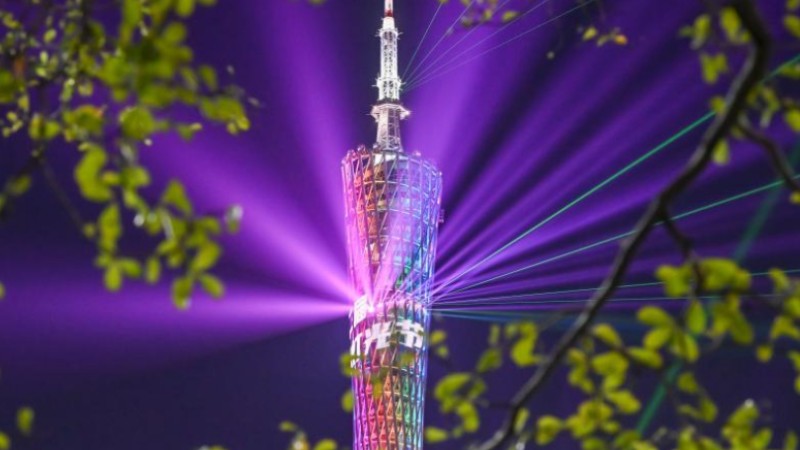Robots deployed to inspect power lines in winter peak
HEFEI, Nov. 27 (Xinhua) -- Amongst transmission towers at a converter station nestled in the mountains of eastern China, a quadruped robotic dog trotted back and forth, conducting a thorough inspection of the grid facilities.
"The robotic dog is equipped with two visible infrared cameras capable of identifying equipment defects such as mechanical looseness and gas leakage," said Sun Chaopeng, an operation and maintenance personnel of Guquan station.
The program-controlled robot sets out to undertake its tasks at a fixed time every day and automatically returns to recharge its battery. This is a prominent example of widely used automation technology ensuring the power supply during the winter peak in China.
The grid that underwent inspection is part of a 1,100-kilovolt ultra-high voltage (UHV) power line starting from northwest China's Xinjiang to the country's eastern province of Anhui, stretching 3,284 kilometers. This "electric highway" boasts the highest voltage, largest transmission capacity, and longest distance in the world.
China's west-to-east power transmission program transmits the electricity surplus in western regions rich in power-generating resources to its eastern regions which need much electricity to power economic activities.
Lack of sufficient manpower posed a grave challenge in maintaining such super-engineering projects, especially in remote areas. Now, robots have begun to alleviate some of the workforce shortages.
At Xinhe town in Chizhou city of Anhui, which is surrounded by mountains, a white fixed-wing drone flew out of its movable nest and deftly shuttled amid interweaving transmission lines in a valley. Within half an hour, the unmanned vehicle completed its 80-kilometer inspection mission.
The high-definition zoom lens mounted on the device captured images of key grid components, such as insulators, and transmitted them in real-time to a platform.
With assistance from artificial intelligence models, analysts sitting behind the displays can promptly identify potential alerts for line damage.
"The high mountains in Chizhou make the manual inspection quite difficult and dangerous," said Hu Jinchao, a grid technician. "Drones provided an effective solution thanks to their high speed, long cruising range, and large inspection radius."
Firefighters at the Guquan converter station also use a fire-detection robot. Equipped with a fire hydrant interface on the top and multiple cameras installed all over the body, the remotely controlled device is capable of working in extreme conditions.
"This robot can operate in a temperature range of minus 20 degrees Celsius to 60 degrees Celsius above zero, and it can spray water or foam with a maximum range of up to 80 meters," said fireman Yu Cong.
The efficiency of this fire-fighting system is seven times that of conventional water spray and 2.5 times that of conventional foam, thus effectively improving the fire-fighting capabilities of UHV converter stations, Yu explained.
Photos
Related Stories
- Chinese service robots achieve success in overseas market
- China's AI robotic chemist synthesizes catalysts for oxygen production on Mars
- China aims to build innovation system for humanoid robots by 2025
- Researchers design wearable device for lateral resistance walk exercise
- Application scenarios of robots continue to expand in China
- China-made robotic vehicle explores underside of Arctic ice
Copyright © 2023 People's Daily Online. All Rights Reserved.









